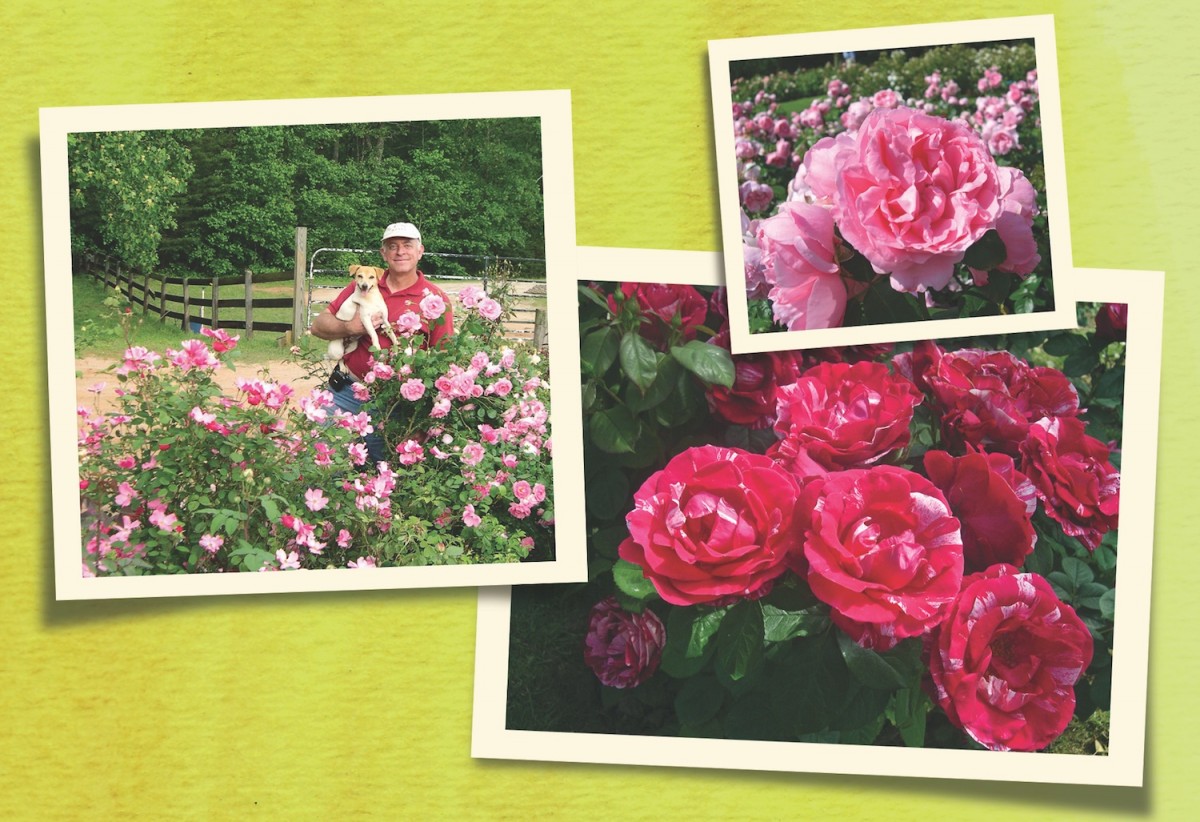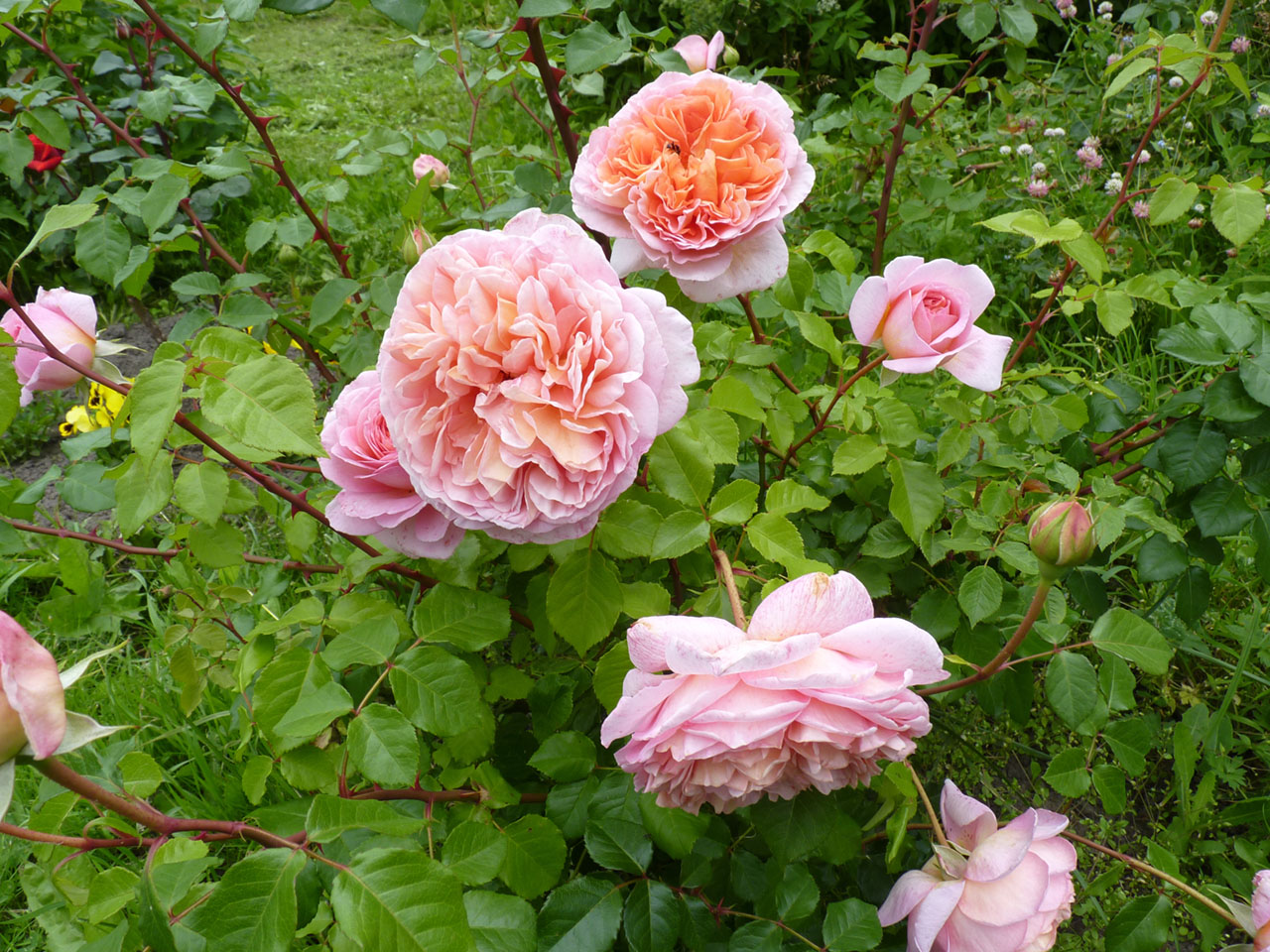
12 natural rose care tips to try at home
First, try an own-root garden rose. “The modern hybrid tea rose was bred to be a long-stem cut flower for the floral industry,” Zimmerman says. “It was never meant to be a successful garden plant, and it isn’t.”
For a naturalistic garden approach, try planting rose bushes close enough so they intermingle. Try three to six to twelve bushes of one variety depending on how much space you want to cover in the flower border. Do not worry about planting in odd numbers.
Between the mass plantings of a particular variety, leave a gap before starting the next variety. This will help with maintaining plants and defining where one variety begins and another ends. This is contrary to everything ever taught about spacing, air flow etc. But keep in mind those rules were written for roses that were not disease resistant and to allow enough room for the intense maintenance needed to grow roses for exhibition.
Treat a mass planting of roses as one plant and shape the whole. In a rose garden, the roses should undulate in drifts from one variety to the next and the ground should not be seen. You do not need to prune each bush of a variety’s mass planting individually.
Keep more canes and prune higher than the method used for exhibition/cut flower roses. This gives you a fuller, rounder shrub with more blossoms. In early spring, prune three to four feet, depending on the plant. For roses damaged by drought, insects, or disease, try rejuvenation by pruning them back to 6 inches. This radical measure will force new cane growth from the base. You might need to be willing to forgo the short-term benefits of flowering for the sake of the long-term health of the roses.
Root pruning may rejuvenate an older rose. Drive a spade into the ground in a circle 18-20 inches from the base of the plant to encourage new growth.

Be wary about feeding your roses high-nitrogen fertilizers right out of the gate in spring. You want them to take their time emerging from dormancy, hence a little nitrogen upfront. Roses need starches manufactured the previous season to wake up from their winter nap. If you wake them up too fast, and they don’t have enough starches to meet your demand, they may burn out.
Apply half a cup of Epsom salts around each bush to promote new basal growth.
Use organics in the soil even if you plan to fertilize later. A living soil is the key to any plant life and is particularly beneficial to plants under stress. Mulch well and in two layers if possible. Use nonsterilized compost like horse manure or mushroom compost and then cover it with a layer of double-ground hardwood mulch. This keeps the root zone at an even temperature.
The key to feeding roses is time-release fertilizers, which are simply fertilizers sold in pellet form that release their nutrients over a period of many months. This gives your roses a steady diet of the food they need. Apply it when the roses are showing their first sets of young leaves. The key is to make sure when you apply it, it will run out before your roses start to shut down for winter. You don’t want to feed during winter because it encourages tender young growth that will be killed back by first frost. This can seriously harm your roses.
If your roses have been experiencing drought conditions during the summer months, give them a good soaking (or two) in fall.
Stop deadheading your roses in early fall. Setting hips is part of the rose’s natural schedule for shutting down and you want to encourage that. Plus hips make a great winter display and are also a great source of winter food for the birds.
Find more of Zimmerman’s rose expertise at PaulZimmermanRoses.com
Zimmerman is the author of Everyday Roses: How to Grow Knock Out® and Other Easy-Care Garden Roses (Taunton Press 2013)
More Rose Wisdom
5 Roses to Grow in An Organic Garden
Flower farmers Mandy and Steve O’Shea of 3 Porch Farm in North Georgia say these old-style rose varieties thrive on organic care.
- ‘Abraham Darby’
- ‘Graham Thomas’
- ‘Quietness’
- ‘Heritage’
- ‘Ballerina’

